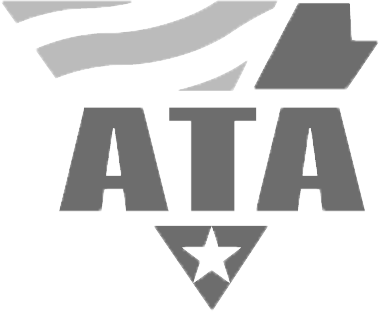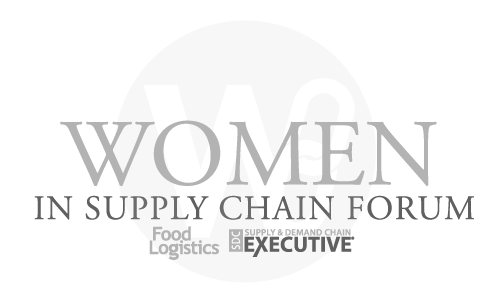The Nearshoring Boom Why Logistics Risks Matter in Mexico
The global supply chain landscape is undergoing a significant transformation. Companies are re-evaluating their manufacturing and sourcing strategies, moving away from distant production hubs towards closer locations. This trend, known as nearshoring, sees businesses relocating operations to neighboring countries to reduce transit times, minimize geopolitical risks, and improve responsiveness. For North American companies, Mexico has emerged as a prime destination for nearshoring investments. Its geographical proximity, competitive labor costs, and established manufacturing base make it an attractive alternative to overseas production.
However, unlocking the full potential of nearshoring in Mexico requires navigating a complex logistics environment. While the benefits are clear – shorter supply chains, reduced inventory holding costs, and faster time to market – the execution presents distinct challenges. Effective logistics management is not merely about moving goods from Point A to Point B; it involves intricate coordination, regulatory compliance, and proactive risk mitigation. For businesses looking to establish or expand their presence south of the border, understanding and addressing these logistical hurdles is paramount. This is where the critical task of De-risking nearshoring Mexico trucking logistics comes into sharp focus.
The success of a nearshoring strategy often hinges on the efficiency and reliability of the transportation network, particularly trucking, which forms the backbone of cross-border and domestic freight movement in North America. The complexities involved in transporting goods across the U.S.-Mexico border and within Mexico’s interior introduce various potential points of failure, from delays and security issues to infrastructure limitations and regulatory compliance challenges. Failing to anticipate and manage these risks can undermine the very advantages that nearshoring seeks to provide, leading to increased costs, service disruptions, and damage to reputation.
Therefore, for companies investing heavily in nearshore manufacturing facilities, a robust strategy for managing logistics risks is not optional; it is a fundamental necessity. It requires a deep understanding of the specific operational environment in Mexico, a willingness to invest in appropriate technologies and partnerships, and a commitment to continuous monitoring and adaptation. The objective is to build a resilient and predictable supply chain that can consistently support manufacturing and distribution needs, ensuring that the nearshoring investment delivers its promised return.
Addressing these risks proactively allows companies to protect their assets, maintain delivery schedules, and ensure compliance with all relevant regulations. In the competitive landscape of global trade, a secure and efficient supply chain can be a significant differentiator, providing a competitive edge in cost, speed, and customer satisfaction. The journey of de-risking nearshoring logistics in Mexico begins with a thorough understanding of the unique challenges inherent in the region’s trucking sector.
Understanding the Unique Challenges of Mexico Trucking
Trucking operations in Mexico present a distinct set of challenges compared to those typically encountered in the United States or Canada. While the North American Free Trade Agreement (NAFTA), and now the United States-Mexico-Canada Agreement (USMCA), has facilitated trade, significant differences remain in infrastructure, regulations, and operational practices that directly impact the efficiency and security of freight movement. These differences necessitate a specialized approach to logistics planning and execution for companies engaged in nearshoring.
One of the primary challenges lies in the infrastructure. While Mexico has made significant investments in its highway network, certain routes, particularly those connecting industrial hubs to ports or border crossings, can experience congestion and may lack the consistent quality and security found on major U.S. interstates. This can lead to longer transit times and increased wear and tear on equipment. Additionally, rural areas may have less developed road networks, posing challenges for last-mile delivery or accessing manufacturing sites located outside major metropolitan areas.
Regulatory differences also play a significant role. Navigating customs procedures at the border requires expertise to avoid delays and penalties. Mexican regulations regarding truck weights, driver hours, and required documentation may differ from U.S. standards, requiring careful adherence to avoid violations. Furthermore, the process for cross-border operations often involves transferring freight between U.S. and Mexican carriers at the border, adding a layer of complexity and potential for delays or errors if not managed efficiently. The drayage process, which involves moving trailers across the border, is a critical bottleneck that demands precise coordination.
Cultural and operational nuances also contribute to the unique environment. Building strong relationships with local partners, understanding local business practices, and navigating potential language barriers are all essential components of successful logistics management in Mexico. The availability and training of skilled drivers in Mexico can also vary, impacting capacity and service quality. Ensuring drivers are properly vetted, trained in secure practices, and equipped with necessary technology is crucial for reliable operations.
Security is arguably the most pressing concern for trucking in Mexico. Cargo theft remains a significant issue in certain regions, necessitating robust security protocols, including route planning, convoy management, and real-time monitoring. Unlike in the U.S., where cargo theft might involve opportunistic petty crime, in Mexico, it can be highly organized, requiring sophisticated preventative measures. Understanding high-risk areas and implementing strategies to mitigate these threats is fundamental to protecting valuable cargo.
Finally, communication and visibility can be challenging. While technology is improving, consistent real-time tracking and communication can be more difficult to achieve compared to operations solely within the U.S. or Canada. This lack of visibility can hinder proactive risk management and make responding to unforeseen events more challenging. Overcoming these unique challenges requires a combination of careful planning, local expertise, and the implementation of effective risk mitigation strategies.
Key Risk Areas in Cross-Border and Domestic Mexico Freight
Successfully navigating nearshoring logistics in Mexico requires a comprehensive understanding of the specific risk areas that can impact the movement of goods. These risks are present in both cross-border operations connecting the U.S. and Mexico and in domestic freight movement within Mexico’s interior. Identifying and mitigating these risks is central to effective supply chain management.
One of the most prominent risks is cargo theft and security incidents. As mentioned earlier, this is a significant concern in Mexico. Organized crime groups sometimes target freight, particularly high-value goods. Routes, times of day, and specific regions can be associated with higher risk levels. The methods used by criminals can range from simple hijacking to more sophisticated attacks involving GPS jamming and driver coercion. The financial impact of cargo theft extends beyond the value of the stolen goods, including lost sales, increased insurance premiums, and potential damage to customer relationships. As cargo theft continues to escalate, brokers require an easy-to-use solution to protect their shipments, highlighting the need for robust security measures.
Border delays and customs issues represent another critical risk area. The movement of goods across the U.S.-Mexico border, particularly at high-volume crossings like Laredo, Texas, can be subject to significant delays. These delays can be caused by various factors, including increased traffic volume, customs inspections, regulatory changes, infrastructure limitations at the border, and even unforeseen events like protests or security alerts. Inefficient customs clearance processes, incomplete or inaccurate documentation, and misinterpretation of regulations can lead to shipments being held up, incurring demurrage charges and disrupting downstream operations. The process requires meticulous attention to detail and a deep understanding of both U.S. and Mexican customs requirements.
Infrastructure limitations and road conditions pose operational risks. While major highways are improving, secondary roads can be in poor condition, leading to slower transit times, increased risk of accidents, and potential damage to cargo or equipment. Congestion in urban areas and around border crossings can also cause significant delays, impacting delivery schedules and increasing fuel costs. Planning routes to minimize exposure to poor infrastructure and congestion is essential.
Regulatory compliance and changes are ongoing concerns. Staying abreast of evolving trucking regulations in both the U.S. and Mexico is crucial. Changes in weight limits, driver requirements, environmental standards, or customs procedures can impact operations and require adjustments to ensure compliance. Failure to comply can result in fines, penalties, and operational disruptions. This includes understanding specific requirements related to permits, licenses, and inspections for cross-border movements.
Operational inefficiencies and communication breakdowns can also introduce significant risks. Lack of real-time visibility into shipment location and status can make it difficult to respond proactively to delays or disruptions. Communication challenges between shippers, carriers, customs brokers, and receivers can lead to misunderstandings, errors, and delays. Inefficient load planning, poorly coordinated handoffs at the border, and inadequate communication protocols can all contribute to supply chain vulnerabilities.
Other risks include driver availability and safety, equipment maintenance and reliability, and political or social instability in certain regions. Ensuring access to qualified, reliable drivers is key, as is maintaining a fleet of well-maintained equipment to minimize breakdowns. While less frequent, political or social unrest can occasionally impact transportation routes and require alternative planning.
Mitigating these diverse risks requires a multi-faceted approach, combining careful planning, robust security measures, leveraging technology for visibility, and partnering with experienced logistics providers who have a proven track record in navigating the complexities of the U.S.-Mexico freight market. The next section delves into specific strategies for effectively De-risking nearshoring Mexico trucking logistics.
Strategies for De-risking Nearshoring Mexico Trucking Logistics
Successfully de-risking nearshoring trucking operations in Mexico requires a strategic and multi-layered approach. It involves implementing preventative measures, leveraging technology, and carefully selecting partners. Here are some key strategies that companies can employ to mitigate the risks associated with cross-border and domestic Mexican freight:
1. Comprehensive Risk Assessment and Route Planning: The first step is to conduct a thorough assessment of potential risks along intended routes, considering factors like cargo theft hotspots, road conditions, border crossing efficiency, and local security situations. Based on this assessment, optimize routes to minimize exposure to high-risk areas and consider using less congested border crossings when feasible. Developing alternative routes and contingency plans for potential disruptions is also crucial.
2. Enhanced Security Protocols: Given the risk of cargo theft, implementing robust security measures is essential. This includes using secure parking facilities, planning transit times to avoid high-risk periods (e.g., night travel in certain areas), and potentially employing convoy services or armed escorts for high-value or high-risk shipments in specific regions. Utilizing trailers with enhanced security features, such as reinforced locks, alarm systems, and covert tracking devices, can also deter theft and aid recovery.
3. Meticulous Documentation and Customs Management: Delays at the border are often caused by incomplete or inaccurate documentation. Establishing rigorous internal processes for preparing and verifying all required customs paperwork for both U.S. and Mexican authorities is vital. Working closely with experienced customs brokers who have a deep understanding of both countries’ regulations can significantly expedite the clearance process and reduce the risk of delays or penalties.
4. Leveraging Technology for Visibility and Security: Technology plays a critical role in de-risking logistics. Implementing real-time GPS tracking systems allows for constant monitoring of shipment location and progress. Geofencing can alert operators if a truck deviates from its planned route. Inward and outward-facing cameras in trucks can provide valuable security insights and evidence in case of incidents. Integrating these systems with a Transportation Management System (TMS) can provide a centralized platform for managing operations and monitoring risks. As seen with APEX Transit’s focus on drivers and safety, technology aids in operational control and driver well-being.
5. Building Strong Carrier Relationships: Partnering with reputable and experienced carriers who have a proven track record in Mexico is fundamental. Look for carriers with established security protocols, reliable equipment, and experienced drivers. Developing strong, long-term relationships based on trust and clear communication is key to ensuring consistent service and proactive issue resolution. An asset-based carrier with owned equipment and drivers often provides greater control and reliability compared to relying solely on brokered capacity.
6. Driver Vetting and Training: The driver is the frontline of your logistics operation. Implementing rigorous vetting processes for drivers operating in Mexico, including background checks and security training, is crucial. Drivers should be trained on security protocols, emergency procedures, and best practices for navigating challenging routes and situations. Ensuring drivers have access to communication tools and feel supported is also important for safety and retention.
7. Insurance and Liability Management: While preventative measures are essential, having adequate insurance coverage is a necessary safeguard. Ensure that cargo insurance policies cover the specific risks associated with transportation in Mexico, including theft and damage. Clearly define liability in contracts with logistics providers.
8. Adapting to Local Conditions: Recognize that operating in Mexico requires flexibility and an understanding of local conditions. This includes being prepared for potential delays due to traffic, weather, or unforeseen events. Building strong relationships with local contacts, including customs officials and law enforcement, can also be beneficial in navigating challenges.
9. Considering LTL and Consolidation Strategies: For smaller shipments, leveraging Less-Than-Truckload (LTL) services or consolidation centers near the border or within Mexico can sometimes offer a more cost-effective and secure option by reducing the number of individual truck movements and utilizing established hub-and-spoke networks. Leveraging LTL for US-Mexico freight cuts costs and can also enhance security through consolidation.
Implementing these strategies helps companies to significantly reduce their exposure to the unique risks of Mexican trucking logistics, enabling them to fully capitalize on the benefits of nearshoring. Technology plays a pivotal role in many of these mitigation efforts, providing the visibility and control necessary for secure and efficient operations.
Technology and Tools Enhancing Supply Chain Security
In the modern logistics environment, technology is not just an efficiency enhancer; it’s a fundamental component of security and risk management, especially when dealing with the complexities of cross-border operations in Mexico. Leveraging the right technological tools provides the visibility, control, and data necessary to effectively mitigate risks and enhance the overall security of the supply chain. De-risking nearshoring Mexico trucking logistics is significantly bolstered by strategic technology adoption.
Real-Time GPS Tracking: This is perhaps the most essential technology for enhancing supply chain security. Real-time tracking systems provide constant updates on the location of a shipment. This allows logistics managers to monitor progress, identify deviations from planned routes, and react quickly in case of unexpected stops or incidents. Advanced systems can integrate with geofencing capabilities, triggering alerts if a truck enters or exits designated areas or deviates from a pre-defined corridor. This visibility is critical for detecting potential theft attempts or unauthorized stops.
Telematics Data and Driver Behavior Monitoring: Modern trucks are equipped with telematics systems that collect vast amounts of data on vehicle performance, driver behavior, and location. This data can be invaluable for risk management. Monitoring speed, braking, acceleration, and adherence to hours-of-service regulations helps ensure driver safety and reduce the likelihood of accidents. Telematics can also detect unusual activity, such as unauthorized stops or excessive dwell times, which could indicate a security issue. Systems like the Samsara ELD, often used in high-compliance operations, provide this level of detailed monitoring.
Integrated Transportation Management Systems (TMS): A robust TMS acts as the central nervous system for logistics operations. It integrates various functions, including load planning, dispatch, tracking, and communication. An effective TMS, like LoadStop TMS used by some carriers, provides a unified platform for managing all aspects of a shipment. When integrated with real-time tracking and telematics data, a TMS gives logistics managers a comprehensive overview of their operations, enabling proactive risk identification and management. API-ready systems allow seamless data flow into customer ERPs, further enhancing end-to-end visibility.
Inward and Outward-Facing Cameras: Increasingly, carriers are equipping their trucks with dashboard cameras that record both the road ahead (outward) and the driver cabin (inward). Outward-facing cameras provide valuable evidence in case of accidents and can help monitor road conditions and traffic. Inward-facing cameras can be used to monitor driver alertness and behavior, ensuring adherence to safety protocols and providing insights in case of security incidents. This technology adds a layer of accountability and provides crucial data for investigations.
Supply Chain Visibility Platforms: Beyond individual carrier systems, advanced visibility platforms aggregate data from multiple sources – including carriers, telematics devices, and customs systems – to provide an end-to-end view of the supply chain. These platforms offer predictive analytics, alerting users to potential delays or disruptions before they occur. Enhanced visibility allows shippers to react quickly to unforeseen events, reroute shipments, and minimize the impact of disruptions.
Cargo Security Devices: While not strictly software, physical security devices integrated with technology are crucial. These include high-security locks on trailers, electronic seals that can be monitored remotely, and hidden GPS trackers within the cargo itself. These devices provide physical deterrence and technical monitoring capabilities, making theft more difficult and improving the chances of recovery.
Data Analytics and Reporting: The data collected from these technologies is invaluable for identifying trends and patterns in risks. Analyzing historical data on delays, incidents, and route performance can help refine risk assessment models and optimize future logistics planning. Regular reporting on key security metrics allows companies to measure the effectiveness of their mitigation strategies and make data-driven decisions.
Implementing a combination of these technologies empowers companies to move beyond reactive problem-solving to proactive risk management. Enhanced visibility, real-time data, and integrated systems provide the tools needed to monitor shipments, detect anomalies, and respond rapidly to potential threats, significantly contributing to De-risking nearshoring Mexico trucking logistics.
Partnering for Success Choosing the Right Logistics Providers
One of the most critical decisions when establishing or expanding nearshoring operations in Mexico is selecting the right logistics partners. The complexity of cross-border operations, the unique challenges of Mexican trucking, and the imperative of risk mitigation demand more than just a transactional carrier relationship. It requires a strategic partnership with providers who possess the necessary expertise, resources, and commitment to security and reliability. Choosing the right partners is perhaps the most impactful strategy for De-risking nearshoring Mexico trucking logistics.
Here are key factors to consider when selecting logistics providers for your Mexico operations:
1. Experience and Expertise in U.S.-Mexico Cross-Border Logistics: Look for providers with a demonstrated history of successfully managing freight across the U.S.-Mexico border. They should have a deep understanding of border protocols, customs procedures in both countries, and established relationships with customs brokers and drayage providers at key gateways like Laredo. Their experience in navigating the specific nuances of this corridor is invaluable.
2. Strong Security Protocols and Track Record: Given the prevalence of cargo theft and security risks in certain regions of Mexico, prioritize carriers with robust security programs. Inquire about their security measures, including driver vetting, route planning practices, use of technology like GPS tracking and security seals, and partnerships with security service providers. Ask for their security incident history and mitigation strategies. A carrier with a strong focus on safety and security, as highlighted in discussions around their operations, indicates a commitment to protecting cargo.
3. Asset-Based vs. Brokerage Capabilities: Consider the benefits of working with providers who have both asset-based and brokerage capabilities. An asset-based carrier operates its own fleet and employs its own drivers, offering greater control over equipment maintenance, driver training, and operational execution. This can lead to higher reliability and consistency. However, brokerage capabilities provide flexibility and access to a wider network, which can be beneficial for covering diverse lanes or handling peak demand. A hybrid model can offer the best of both worlds, providing owned capacity for core lanes while leveraging brokered capacity for flexibility. Understanding the benefits of the trucking asset brokerage hybrid model is crucial here.
4. Technological Capabilities and Visibility: Assess the provider’s technology stack. Do they offer real-time tracking? Can their systems integrate with your own ERP or TMS for seamless data exchange? Do they utilize telematics and other tools for monitoring and security? Transparency and visibility are paramount for managing risks, so partner with providers who invest in and effectively utilize technology.
5. Financial Stability and Reputation: Choose financially stable partners who have a good reputation in the industry. Check references, review their safety and compliance scores (like FMCSA data in the U.S.), and look for testimonials from other shippers. A reliable partner is one you can trust to deliver consistently and handle challenges professionally.
6. Communication and Customer Service: Effective communication is vital, especially when dealing with potential delays or issues. Assess the provider’s communication protocols, responsiveness, and customer service capabilities. You need partners who can provide timely updates, are easy to contact, and are proactive in addressing concerns.
7. Scalability and Flexibility: As your nearshoring operations grow, your logistics needs will evolve. Choose partners who have the capacity to scale with you and the flexibility to adapt to changing requirements, whether it’s handling increased volumes, serving new locations, or accommodating specialized freight.
8. Understanding of Local Nuances: Partners who have established relationships and a deep understanding of local conditions, regulations, and cultural nuances in Mexico can help smooth operations and navigate potential challenges more effectively. This local knowledge can be a significant advantage in preventing delays and mitigating risks.
Choosing the right logistics partners is a strategic investment in the success of your nearshoring venture. These partners act as an extension of your own operations, and their capabilities and reliability directly impact your ability to operate efficiently and securely in Mexico. A collaborative approach, built on trust and shared goals, is key to building a resilient supply chain and successfully securing Mexico cross-border nearshoring trucking operations.
Building Resilient Nearshore Supply Chains Through Risk Mitigation
The decision to nearshore production to Mexico is often driven by the desire for greater supply chain resilience, aiming to reduce reliance on distant, potentially unstable regions. However, achieving true resilience in a nearshore model is not automatic; it is a direct outcome of effective risk mitigation strategies, particularly within the critical trucking component. By proactively addressing the unique challenges and risks associated with Mexico trucking logistics, companies can build supply chains that are not only more efficient but also more robust and adaptable to disruptions.
Resilience in a nearshore supply chain means the ability to withstand and recover quickly from unforeseen events, whether they are border delays, security incidents, infrastructure issues, or regulatory changes. A supply chain is only as strong as its weakest link, and often, that link can be the physical movement of goods. Therefore, focusing on De-risking nearshoring Mexico trucking logistics is fundamental to building a truly resilient system.
The strategies discussed – comprehensive risk assessment, enhanced security protocols, meticulous documentation, leveraging technology for visibility, and partnering with the right logistics providers – all contribute to this overarching goal of resilience. They move the supply chain from a state of vulnerability to one of prepared strength. For example, while you cannot eliminate the possibility of cargo theft, implementing advanced security measures and having a responsive recovery plan significantly reduces the impact of such an event on the overall supply chain flow.
Similarly, while border delays are a fact of life in cross-border trade, proactive customs management, selecting optimal crossing points, and having real-time visibility enable companies to anticipate delays, communicate effectively with stakeholders, and minimize the knock-on effects on manufacturing schedules or inventory levels. This proactive approach, facilitated by technology and strong partnerships, is a hallmark of a resilient supply chain.
Furthermore, a resilient nearshore supply chain in Mexico considers not just immediate risks but also long-term trends and potential future disruptions. This includes staying informed about infrastructure development plans, evolving regulatory landscapes, and socio-economic changes that could impact logistics operations. Working with logistics partners who are also forward-thinking and adaptable is crucial for navigating future uncertainties.
Building resilience also involves a focus on diversification and redundancy where appropriate. While efficiency is a goal, sometimes having backup options for routes, carriers, or even manufacturing sites can be a vital safety net during major disruptions. However, for everyday operations, efficiency is key, and de-risking through meticulous planning and execution is the primary driver of reliability.
Ultimately, the success of nearshoring to Mexico is intrinsically linked to the effectiveness of its logistics. By prioritizing the task of De-risking nearshoring Mexico trucking logistics, companies are not just protecting their shipments; they are building the foundation for a reliable, cost-effective, and resilient supply chain that can consistently support their business objectives in the North American market. This investment in risk mitigation pays dividends in terms of reduced costs, improved service levels, and enhanced competitive advantage.
In conclusion, while the allure of nearshoring to Mexico offers significant potential benefits, successfully realizing these advantages depends heavily on the ability to navigate and mitigate the inherent logistics risks. By implementing comprehensive strategies, leveraging appropriate technology, and forging strong partnerships with experienced logistics providers, companies can effectively de-risk their Mexico trucking operations and build the resilient supply chains necessary for sustained success in the nearshore environment.
Have questions? Contact us here.














